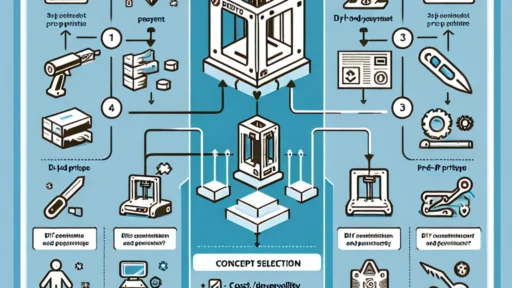Tips for Improving Adhesion in Your 3D Prints
If you’re diving into the world of 3D printing, you’ve probably come across the dreaded issue of poor adhesion. Whether you’re a hobbyist or a professional, there’s nothing quite as frustrating as watching your carefully crafted print lift off the build plate or warp during the printing process. But fear not! There are plenty of strategies you can use to improve adhesion and create stunning prints that stick with you—literally.
Pick the Right Build Surface
Before you even start your print, the first step toward improving adhesion lies beneath your project: the build plate. Various surfaces can greatly affect how well your print adheres.
- Glass: This smooth option offers a nice, flat surface. To improve adhesion, you can add a layer of glue stick, hairspray, or a specific adhesion spray.
- Blue Tape: Painter’s tape offers a slightly textured surface that many find helpful. It’s especially good for PLA filaments; just make sure to keep it clean for the best results.
- PEI Sheets: Polyetherimide (PEI) sheets are also widely recommended. They offer excellent adhesion properties and are reusable after a quick cleaning.
- Brim and Raft: Utilizing a brim or raft can help increase the surface area of your print. A brim surrounds the base while a raft creates an entirely separate foundation underneath your object.
Fine Tune Your Nozzle Height
Getting the nozzle height just right is crucial for adhesion. If it’s too high, the filament won’t be squished enough into the bed, and the layers won’t bond properly. Conversely, if the nozzle is too low, it may create excess pressure, which can cause clogs or damage.
A good rule of thumb is to adjust your Z-offset until you can just slide a piece of paper between the nozzle and the print bed with slight resistance. This fine-tuning can make all the difference in how well your print stick to the bed.
Temperature Matters
Don’t underestimate the effect of temperature on adhesion. For starters, make sure your print bed is appropriately heated. Materials like ABS and PETG benefit significantly from a heated bed, reducing warping and promoting adherence.
- PLA doesn’t always require a heated bed, but keeping it around 50°C can help with sticking.
- ABS usually requires a bed temperature of around 100°C for optimal adhesion.
- PETG thrives at 70-80°C on the bed, giving it that perfect nest to cling to while printing.
Optimize Your Print Settings
Diving into your slicing software to adjust settings can help with adhesion as well. Increasing the first layer height allows for better adhesion by squishing the filament down more. Additionally, consider:
- Print Speed: Slowing down the print speed of the first layer gives the filament more time to stick.
- Layer Width: A slightly larger extrusion width on the first layer can also promote better adherence.
You might also want to play with the first layer percentage, which allows you to expand the footprint of that initial foundation.
Use Adhesion Aids
Sometimes, extra help is needed! Using specific adhesion aids can help tremendously. Options include:
- Glue Sticks: A classic 3D printing hack, applying a thin layer of glue stick to your build platform before printing offers an extra layer of assurance.
- Blue Painter’s Tape or Kapton Tape: Used as an undercoat, both types of tape can enhance the texture of your build plate, which can help filament grip better.
- Special Adhesive Products: Products like Magigoo or 3D Lac can work wonders in various situations; just apply a thin layer as recommended.
Environment Matters
Finally, don’t overlook the environment where you print. Keeping it free from drafts and maintaining a consistent temperature can help prevent issues. If you’re working in a cooler area, consider setting up a makeshift enclosure to retain heat.
By experimenting with different build surfaces, fine-tuning your settings, and caring for your materials, you’ll find a combination that yields remarkable adhesion. Each print is a new adventure, and with the right techniques, you can tackle any challenges that come your way—ensuring that your creations stay grounded on their journey from idea to reality. Happy printing!






